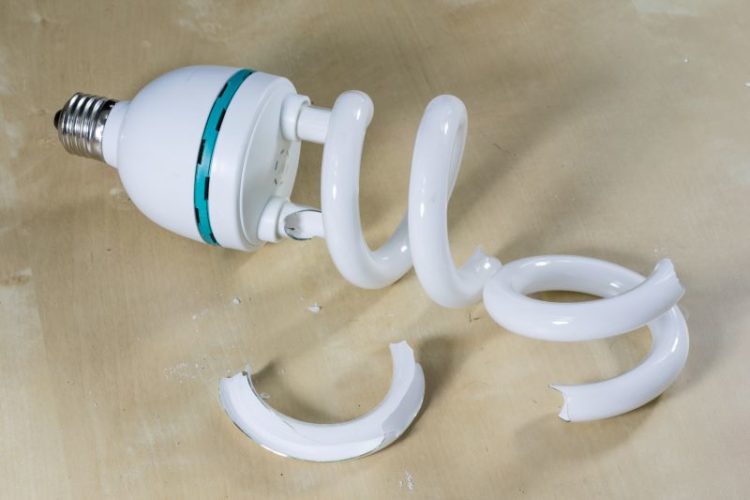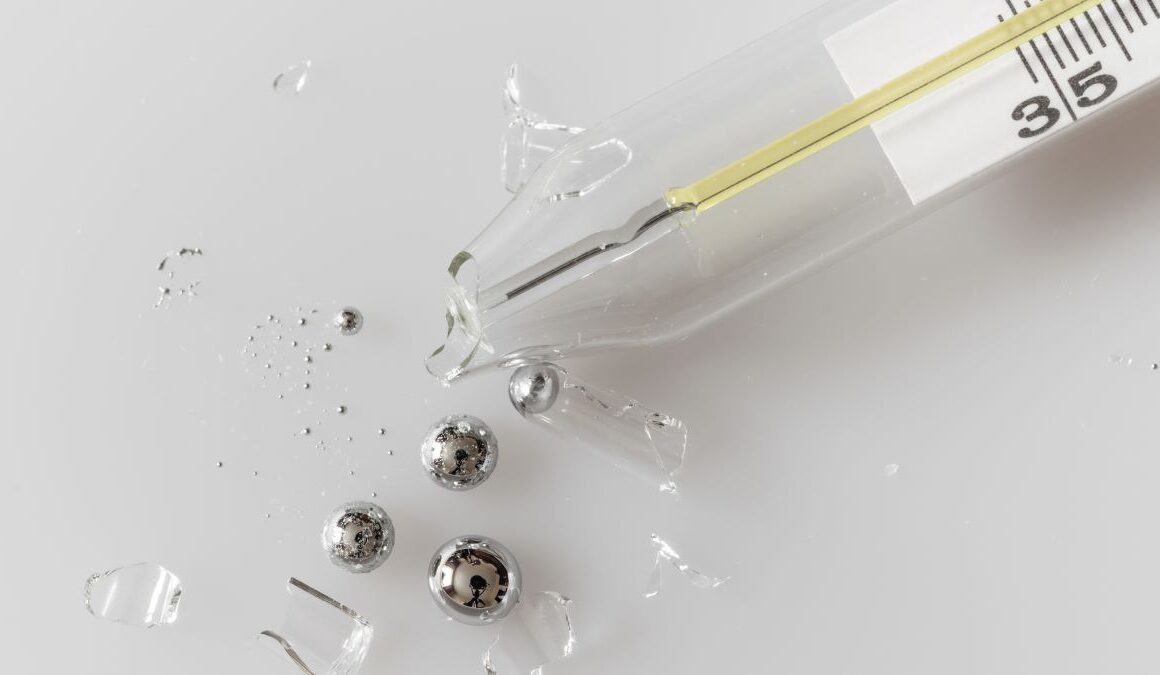Steering Clear of Mercury Hazards
On Mount Olympus, Mercury is the Roman god with power over commerce and communication and all things speedy. Mercury is the fastest and smallest planet in the solar system and the closest to the sun. And here on Earth, mercury is a substance that can kill you. So it’s troubling to discover just how many items in your own home contain mercury.
Mercury
Mercury is an element that occurs naturally as a silver-colored liquid (hence the obsolete name quicksilver). It can evaporate, becoming an invisible, odorless, toxic vapor. Exposure to elemental mercury is usually the result of breaking products and devices that contain it. When mercury combines with inorganic chemicals, it forms salts that are used in photography and as a wood preservative and fungicide. Combined with organic chemicals, it forms the highly toxic methylmercury, which is the form found in seafood. Mercury is an environmental pollutant released by coal power plants, among other industrial sources.
A neurotoxin that can be inhaled, ingested, or absorbed through the skin, mercury has severe health effects. Unborn infants are the most vulnerable to methylmercury, with impacts to cognitive thinking, memory, attention, language, fine motor skills, and visual-spatial skills. Adults exposed to high levels of methylmercury can experience vision loss, muscle weakness, and motor impairment. Exposure to elemental mercury can cause tremors, mood swings, headaches, neuromuscular problems, and diminished mental function. Acute exposure can be fatal.
Mercury Safety
To help reduce mercury pollution, find out if your electricity comes from coal power and if it does, try to find a safer source — either through a green power program from your utility or other energy provider or by installing solar panels (although these contain many other toxic materials). To reduce your personal exposure, learn how to eat seafood safely; how to safely handle and properly recycle any products you already own that contain mercury; and look for mercury-free alternatives to the following products.
Batteries and Bulbs
Since 1996, mercury has been prohibited in the United States in all batteries except button cell batteries and mercuric oxide batteries. Button cell batteries are used in small electronic devices like watches and do not pose a risk during use. However, they are a choking risk for small children and if swallowed, can cause serious internal damage and even death. Button batteries must be recycled because mercury can be released when they are incinerated or landfilled, which is illegal in some areas. If local recycling is not available you can use a mail-in recycling program. Once you’ve recycled your old batteries, consider switching to rechargeables. Mercuric oxide batteries are produced for military and medical equipment that most households will not encounter.
Although compact fluorescent lightbulbs are much more energy-efficient and longer-lasting than old-fashioned incandescent bulbs, they are among the types of lightbulbs that contain small amounts of mercury. That means they need to be handled carefully to avoid breakage; if a CFL bulb does break, it must be cleaned up carefully. Bulbs that contain mercury cannot be placed in the trash. They must be recycled. Consider replacing CFL bulbs with LEDs.

Thermometers and Thermostats
Safely cleaning up a broken mercury thermometer is not easy, and there’s little reason to take the risk. Not all thermometers contain mercury. If there is no liquid in the thermometer (for example, digital thermometers and most meat thermometers) or if the liquid in a thermometer bulb is any color other than silver, the thermometer does not contain mercury. Even if the liquid is silver, it might not be mercury. If you have a mercury thermometer, it’s best to recycle it and replace it with a safer option.
New digital and electromechanical thermostats do not contain mercury, and many states ban the sale of thermostats that do. But many older thermostats contain about 3 grams of mercury in their switches. Remove the front plate of your thermostat and look for small glass bulbs inside to determine if yours contains mercury. The switches do not pose a risk while in use but should be disposed of as household hazardous waste.
Electronics
Mercury is used in LCD screens and monitors. It is also used in laptop screen shutoffs. Televisions manufactured before 1991 may also contain mercury switches. These electronic products also contain many other toxic materials and should not be disposed of as garbage. Although recycling electronics is not always easy, it’s important to do so. TCO Certified technology products do not contain mercury but may not be available for all of these electronics.
Old Stuff
Like many toxic materials, mercury use was much more widespread in the past. Beware of antique barometers, clock pendulums, mirrors, vases, and organs. Older electric appliances from chest freezers to space heaters may contain mercury switches and pilot light sensors. Vehicles manufactured before 2003 may also contain mercury switches or relays and wheel balancers. These older products may need to be treated as household hazardous waste, go to a specialized recycler, be dismantled by a specialist, or be returned to the manufacturer. Safely disposing of mercury-containing products can require a lot of time and effort, but mercury is a material with toxicity severe enough to warrant extreme caution.


